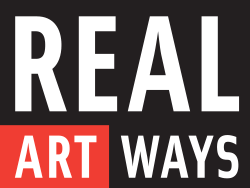Event
Far Out: Life On & After the Commune - Screening & Q&A
On Saturday, 11/23, we will be hosting a Q&A post-screening. Filmmaker Charles Light and cultural worker, performer, writer, and poet Verandah Porche and musician Patty Carpenter will be available for questions on stage. Tickets for Saturday will be $20 for general admission. All other showtimes will be regularly priced.
In the summer of 1968, a group of radical journalists from Liberation News Service (LNS) left New York City for the country in the middle of a left-wing faction fight. They founded two communes – at Packer Corners in Guilford, VT, and Montague, MA. After leaving the city and turning away from national politics, the group of young city slickers became pioneers in the back-to-the-land and organic farming movement.
With the help of their neighbors, they spent the first five years learning rudimentary agricultural skills and how to live and work with each other as a communal family. In 1973, when the local utility proposed a giant twin nuclear plant four miles from the Montague Farm, they became active opponents. In a dramatic act of civil disobedience, Sam Lovejoy, from the Montague Farm, toppled a 500-foot weather tower on the planned nuclear site. He turned himself in and was acquitted after a trial where he represented himself and drew national attention.
Subsequently, the group became leaders in the burgeoning No Nukes movement–from the battles over the Seabrook nuclear plant to Diablo Canyon in California and scores of reactor sites in between. In 1979, they teamed up with Jackson Browne, Bonnie Raitt, Graham Nash, and other committed rock stars to help produce five nights of sold-out concerts at Madison Square Garden and a 250,000-person rally in New York City. The Packer Corners farm also returned to politics, aiding in the anti-nuclear fight, but also by engaging with the local community through producing outdoor plays such as
Midsummer Night’s Dream, Alice in Wonderland, and The Tempest. Blending contemporary interviews and a remarkable trove of original archival footage, Far Out is lively, humorous, inspiring, and irreverent. The point of view is honest rather
than nostalgic. The film is vital, telling the history but hewing to the universal themes of how we grapple–over a lifetime–with politics, relationships, morality, spirituality, civic engagement, and finding our home.
The movie takes advantage of an exceptional collection of archival material, much of which is produced by commune members. Producers Charles Light and Daniel Keller were community members and filmed the nuclear battles–in titles such as Lovejoy’s Nuclear War, The Last Resort, and Save the Planet–and many hours of daily life at the farms. Far Out also uses material from other professional filmmakers, notably Alan Dater and John Scagliotti’s The Stuff of Dreams, Robbie Leppzer’s Seabrook ’77, Nora Jacobson and Alan Dater’s The Vermont Movie, and Barbara Kopple and Danny Goldberg’s No Nukes.
Far Out documents communal life in the ‘70s with footage shot by Harry Saxman and Don McLean and photos by Peter Simon and others. Books by commune members (among the many: Ray Mungo’s Famous Long Ago and Total Loss Farm; Steve Diamond’s What the Trees Said; Verandah Porche’s The Body’s Symmetry; Harvey Wasserman’s History of the US; Peter Gould’s Burnt Toast; Tom Fels’ Farm Friends; Marty Jezer’s The Dark Ages; and Verandah and Patty Carpenter’s music album, Come Over, as well as the group’s Home Comfort), and the poetry, visual art, plays and music that the farms produced adds detail.
The film traces fifty years in the lives of this group of New England writers, activists, and artists. It conveys how these “hippies” transformed Vermont and western Massachusetts and how rural life and the people they met changed them.
